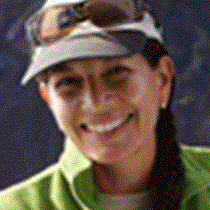Santa Cruz Island
Santa Cruz is the second largest island in the archipelago, and home to both the largest human population and the second largest wild tortoise population in the islands.
In the morning we had the chance to visit Puerto Ayora, home to some 18,000 inhabitants and the economic hub of the archipelago, as well as the Charles Darwin Research Station (CDRS) headquarters, with one of the most significant and successful programs in the ecological restoration of the islands: the giant tortoise breeding program. We were very fortunate to see “Lonesome George,” the last of his kind, and the Española Island individuals, as well as baby tortoises born here and other large tortoises involved with increasing the population.
After the Darwin Station and some shopping in town, we boarded a series of buses for a 35-minute drive to a highland farm bordering El Chato Tortoise Reserve. Some of us walked through a lava tunnel (400 m long) popping up from underground right alongside the restaurant where we had a healthy lunch.
Following lunch and with our rubber boots on, we re-boarded the buses to travel into the property of a Galápagos native located in the middle of the tortoise migratory route where we searched for wild tortoises. The rocky ground and muddy patches were well worth the effort as we encountered some of these ancient reptiles in their natural habitat.
Afterwards we continued further into the highlands to visit a pair of huge pit craters called Los Gemelos, surrounded by a forest of the endemic Scalesia trees, one of the rarest and most endangered ecosystems in the Galápagos, where we observed ferns, orchids, and some Darwin finches feeding on seeds or insects.
After this amazing day, we all headed back to town, to explore a little bit more about shopping possibilities or just to watch how everyday life works here in the Galápagos.
Back to home, our little ship, and the day wasn’t over, as after dinner we were delighted with some local musicians that came on board.
Just another interesting day here on board National Geographic Islander!




